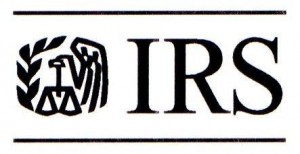 The IRS revised the Instructions for Schedule UTP in early February but one thing that it did not change was the definition of the concise description required to accompany each uncertain tax position. The IRS later publicly expressed concerns over the small number of taxpayers (about 133) who offered inadequate concise descriptions on the Schedule UTP attached to their 2010 returns. On May 11, the IRS addressed this issue by publishing specific guidance for preparing concise descriptions on the 2011 Schedule UTP.
The IRS revised the Instructions for Schedule UTP in early February but one thing that it did not change was the definition of the concise description required to accompany each uncertain tax position. The IRS later publicly expressed concerns over the small number of taxpayers (about 133) who offered inadequate concise descriptions on the Schedule UTP attached to their 2010 returns. On May 11, the IRS addressed this issue by publishing specific guidance for preparing concise descriptions on the 2011 Schedule UTP.
Schedule UTP instructs a taxpayer to draft a concise description as follows:
Provide a concise description of the tax position, including a description of the relevant facts affecting the tax treatment of the position and information that reasonably can be expected to apprise the IRS of the identity of the tax position and the nature of the issue. In most cases, the description should not exceed a few sentences. Stating that a concise description is “Available upon Request” is not an adequate description.
The new IRS guidance offers five examples of hypothetical concise descriptions that rather clearly do not meet the requirements of the instructions. One such example is,
This is an issue for which we have recorded of reserve because the appropriate tax treatment of this position is unsettled and we are awaiting published guidance and we are awaiting the outcome of pending litigation.
The other examples of clearly insufficient descriptions indicate that the issue is under audit or that the item is subject IRS scrutiny. The IRS notes that descriptions like this are inadequate because they do not provide relevant facts affecting the tax treatment of the item nor do they identify the tax position and the nature of the issue.
Of greater instruction for most practitioners, are the four examples in this guidance that clearly identify the tax issue but still still fall short of the IRS standard for a proper concise description. The second set of examples compare specific hypothetical concise descriptions for the same tax position, one of which is insufficient and one of which is sufficient.
The first of these examples uses the following insufficient concise description:
This is a research credit issue.
The guidance suggests the following is a better description of a potential research credit issue:
The taxpayer incurred support department costs that were allocated to various research projects based upon the methodology the taxpayer considers reasonable. The issue is whether the taxpayer’s method of allocating these costs is acceptable by the IRS.
Another example starts with the following insufficient description:
The taxpayer claimed a domestic production activities deduction. The domestic production activities deduction is highly factual and subject to review by the IRS.
The guidance indicates that a sufficient concise description for a domestic production activities deduction would read as follows:
The taxpayer claimed the domestic production activities deduction on certain production activities income for 2010. The issue is whether costs incurred for product aging processes that occur in designated areas located at the taxpayer’s distribution facility are considered manufacturing or production costs of the tangible personal property, and therefore, a component of Qualified Production Activities Income.
These guidelines will be helpful to determine the scope and extent of the necessary concise description as practitioners consider their Schedule UTP disclosures for 2011.
Read the complete IRS guidance here:
Schedule UTP Guidance for Preparing Concise Descriptions

